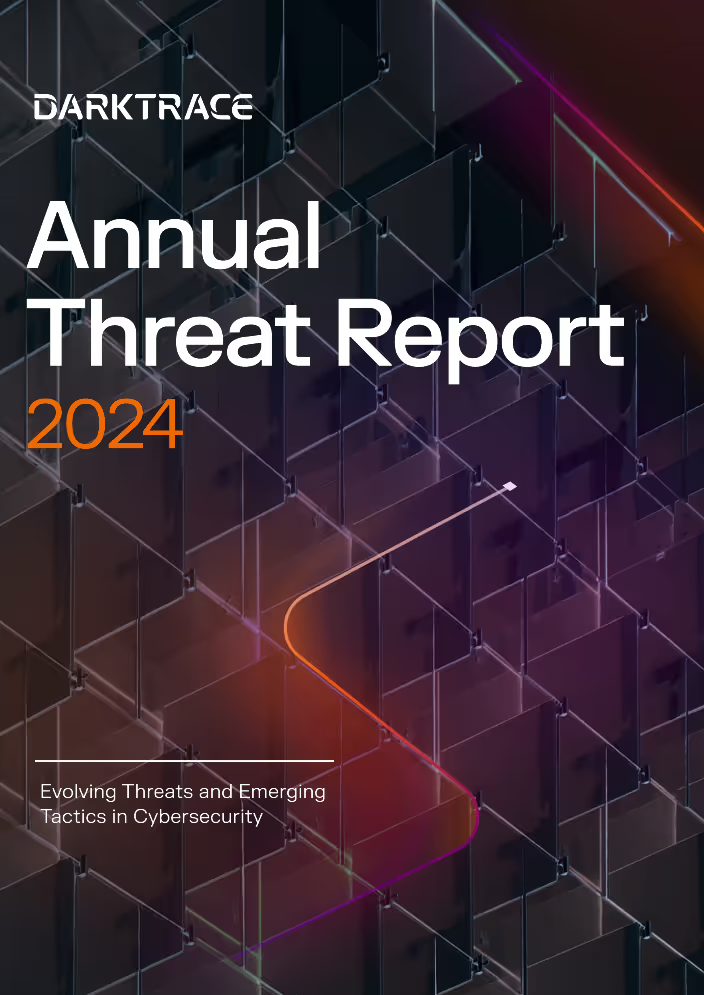What is an insider threat?
An insider threat is a cyber risk originating from within an organization. These threats can involve actions such as an employee inadvertently clicking on a malicious link (e.g., a phishing email) or an employee with malicious intent conducting data exfiltration for corporate sabotage.
Insiders often exploit their knowledge and access to legitimate corporate tools, presenting a continuous risk to organizations. Defenders must protect their digital estate against threats from both within and outside the organization.
For example, in the summer of 2024, Darktrace / IDENTITY successfully detected a user in a customer environment attempting to steal sensitive data from a trusted Google Workspace service. Despite the use of a legitimate and compliant corporate tool, Darktrace identified anomalies in the user’s behavior that indicated malicious intent.
Attack overview: Insider threat
In June 2024, Darktrace detected unusual activity involving the Software-as-a-Service (SaaS) account of a former employee from a customer organization. This individual, who had recently left the company, was observed downloading a significant amount of data in the form of a “.INDD” file (an Adobe InDesign document typically used to create page layouts [1]) from Google Drive.
While the use of Google Drive and other Google Workspace platforms was not unexpected for this employee, Darktrace identified that the user had logged in from an unfamiliar and suspicious IPv6 address before initiating the download. This anomaly triggered a model alert in Darktrace / IDENTITY, flagging the activity as potentially malicious.

Following this detection, the customer reached out to Darktrace’s Security Operations Center (SOC) team via the Security Operations Support service for assistance in triaging and investigating the incident further. Darktrace’s SOC team conducted an in-depth investigation, enabling the customer to identify the exact moment of the file download, as well as the contents of the stolen documents. The customer later confirmed that the downloaded files contained sensitive corporate data, including customer details and payment information, likely intended for reuse or sharing with a new employer.
In this particular instance, Darktrace’s Autonomous Response capability was not active, allowing the malicious insider to successfully exfiltrate the files. If Autonomous Response had been enabled, Darktrace would have immediately acted upon detecting the login from an unusual (in this case 100% rare) location by logging out and disabling the SaaS user. This would have provided the customer with the necessary time to review the activity and verify whether the user was authorized to access their SaaS environments.
Conclusion
Insider threats pose a significant challenge for traditional security tools as they involve internal users who are expected to access SaaS platforms. These insiders have preexisting knowledge of the environment, sensitive data, and how to make their activities appear normal, as seen in this case with the use of Google Workspace. This familiarity allows them to avoid having to use more easily detectable intrusion methods like phishing campaigns.
Darktrace’s anomaly detection capabilities, which focus on identifying unusual activity rather than relying on specific rules and signatures, enable it to effectively detect deviations from a user’s expected behavior. For instance, an unusual login from a new location, as in this example, can be flagged even if the subsequent malicious activity appears innocuous due to the use of a trusted application like Google Drive.
Credit to Vivek Rajan (Cyber Analyst) and Ryan Traill (Analyst Content Lead)

Get the latest insights on emerging cyber threats
Attackers are adapting, are you ready? This report explores the latest trends shaping the cybersecurity landscape and what defenders need to know in 2025.
- Identity-based attacks: How attackers are bypassing traditional defenses
- Zero-day exploitation: The rise of previously unknown vulnerabilities
- AI-driven threats: How adversaries are leveraging AI to outmaneuver security controls
Stay ahead of evolving threats with expert analysis from Darktrace. Download the report here.
Appendices
Darktrace Model Detections
SaaS / Resource::Unusual Download Of Externally Shared Google Workspace File
References
[1]https://www.adobe.com/creativecloud/file-types/image/vector/indd-file.html
MITRE ATT&CK Mapping
Technqiue – Tactic – ID
Data from Cloud Storage Object – COLLECTION -T1530






































.jpg)